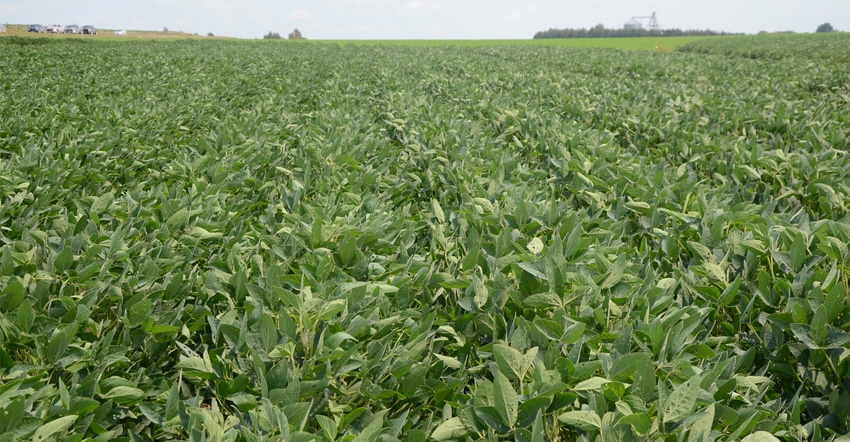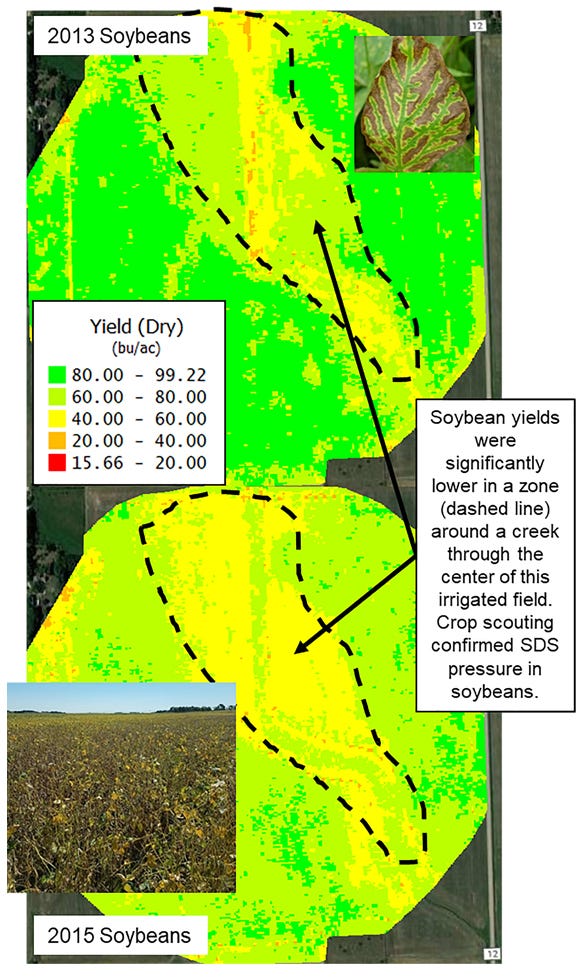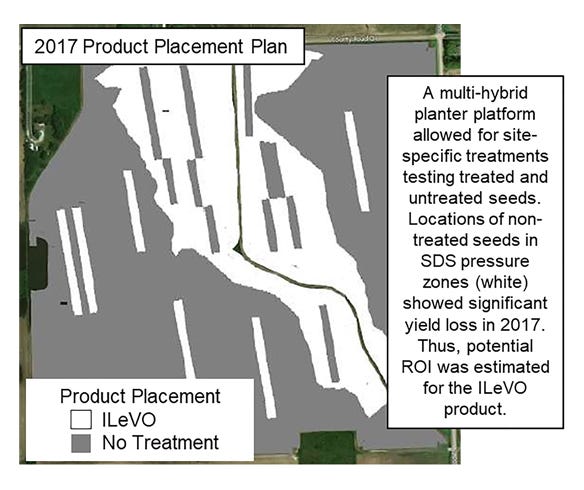November 5, 2020

Since they first arrived on the agricultural scene nearly 30 years ago, there have been many ways to realize benefits from yield maps.
In just the past few years, profitability maps have become much easier to create with Farm Management Information Systems software packages. This has helped a lot of folks see, for instance, how variable-rate applications might help increase margins across their fields.
I'd like to share with you a good way to apply your past yield maps to look at the future potential for investments in products or management strategies. One of the key elements that has to be added to the analysis is crop scouting information, georeferenced, if possible.
Soybean yield maps from an irrigated operation in eastern Nebraska revealed some significant yield losses in a low-lying region of the field in both 2013 and 2015. The field was managed in a corn-soybean rotation.

FIGURE 1: Soybean yield maps from an irrigated field in eastern Nebraska.

Figure 1 shows this area outlined with a black dotted line where yields were significantly lower by 14 bushels per acre and 13 bushels per acre in 2013 and 2015, respectively, compared to the remaining field average.
Due to diligent crop scouting in the field during those years, the grower knew that the underlying issue causing the yield loss was sudden death syndrome. You may recall that 2015 also happened to be the year that Bayer first introduced its Ilevo seed treatment for combating SDS in soybeans.
Back to the yield maps discussion. Having quantified a consistent loss of yield in those SDS-affected areas of the field with yield mapping, the grower knew that they were leaving some serious money on the table (over $100 per acre at $9 beans). In my opinion, that gave them a good idea of what type of investment they could make in that location for, in this case, a seed treatment of Ilevo, which we estimated at about $15 per acre or so.
Fast forward to 2017, the Nebraska Extension digital ag team had the opportunity to partner with the grower while we were testing a multihybrid planter with Kinze Manufacturing. Through this on-farm research study, we were able to deploy test strips of Ilevo-treated and untreated seeds seamlessly using that planting system (Figure 2).

FIGURE 2: 2017 product placement prescription using the Kinze multihybrid planting platform.

The results were striking. The treated seed in the "SDS pressure zone" yielded 10 bushels per acre higher than the untreated seed. In the "no SDS pressure zone," the yields were essentially identical.
In the end, using the seed treatment where the potential for improvement was highest would have resulted in a $78 per acre increase in profitability for that area of the field. There's a lot more to unpack from this study (more to come), and we recognize that not everyone has access to a multihybrid planting platform. But there is a lot we can do with our current technology to conduct on-farm research and still get meaningful results.
I think the key takeaways were historic yield maps helped quantify yield losses in certain areas of the field; crop scouting notes clearly identified the root cause for yield loss; these gave the grower an idea of potential gains when suitable solutions (seed treatments) became available; and using on-farm research techniques, we were able to assess the actual impact of that treatment on profitability.
If you have questions or want to learn more, email [email protected] or follow @NEDigitalAg on Twitter.
Check out weekly interviews on our "FarmBits" podcast at https://mediahub.unl.edu/channels/39344.
Luck is a Nebraska Extension precision agriculture engineer.
You May Also Like




